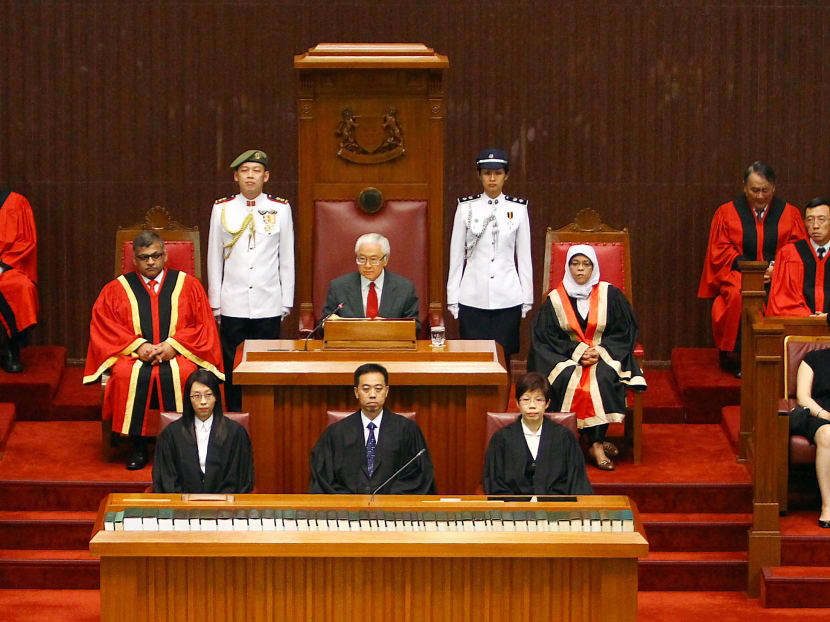Laws on entrenching Elected Presidency and certain powers to be amended
SINGAPORE — The Government will look into bringing provisions that entrench the President’s discretionary powers into force, while amending them so that there is more room for the Elected Presidency (EP) to be adapted to changing circumstances.

President Tony Tan addressing MPs at the opening of the second session of the 12th Parliament in May last 2015. TODAY file photo
SINGAPORE — The Government will look into bringing provisions that entrench the President’s discretionary powers into force, while amending them so that there is more room for the Elected Presidency (EP) to be adapted to changing circumstances.
But it will do so only “some time” after the latest round of changes to the EP is passed and takes effect, said the Government in its White Paper responding to the Constitutional Commission’s report on the EP released on Thursday (Sept 15).
Provisions to ensure the President’s powers were not bypassed or reduced had been suggested in both the 1988 and 1990 White Papers on the Presidency.
These included how the Government will require a two-thirds majority in a national referendum if it wishes to override the President’s veto to constitutional amendments on these provisions.
While these provisions are in the Constitution, they have not been brought into force.
In its report on the EP released last week, the Constitutional Commission said it might be inappropriate to suspend these mechanisms indefinitely, even as it noted that if they were brought into force, they would make further amendments virtually impossible and affect Singapore’s ability to deal with unexpected difficulties related to the EP.
In response, the Government said it had not brought into force these provisions because the EP is unique and had to be refined over the years as the Government gained experience.
Acknowledging the commission’s views, it said it intends to introduce a tiered and “recalibrated entrenchment framework” that will try to strike a balance between ensuring that the Constitution is adaptable to changing circumstances and providing enough stability in entrenched areas.
Speaking on the sidelines of a dialogue on the EP on Thursday evening, Law and Home Affairs Minister K Shanmugam said: “I think there is a good reason for making (the provisions) difficult to amend, but you shouldn’t make it impossible to amend.”
Since the provisions were intended to entrench the EP, they should focus on the custodial functions of the Elected Presidency. “So the entrenchment would be redrafted to cover those specific aspects,” he said.
The proposed framework has two tiers, with the first to include provisions establishing the EP and the entrenchment framework itself.
In situations where the President disagrees with the amendments of provisions in this tier, and the CPA agrees with the President, the Government will require a majority vote national referendum to override the President’s veto. But if the President’s veto is not supported by the CPA, the provision can be amended with a two-thirds majority vote in Parliament.
The second tier will cover provisions related to other aspects of the EP and its two custodial functions.
As these cover considerable operational detail, the Government will need the flexibility to be able to amend these provisions, to keep up with changing needs and unforeseen contingencies.
As such, under this tier, if the President disagrees with the amendment and has the support of the CPA, the Government will need a three-quarter super-majority in Parliament, or a majority vote at a national referendum to override the President.
Again, if the President’s veto is not supported by the CPA, the issue can be amended with a two-thirds majority vote in Parliament.
Provisions that have nothing to do with the EP will be subjected to the usual constitutional amendment process.
“In the Government’s view, this framework makes it difficult to amend the provisions that are entrenched. In some situations, the matter can only be resolved through referendum. But the framework will not render amendment of the provisions altogether impossible,” the Government said in the White Paper.






